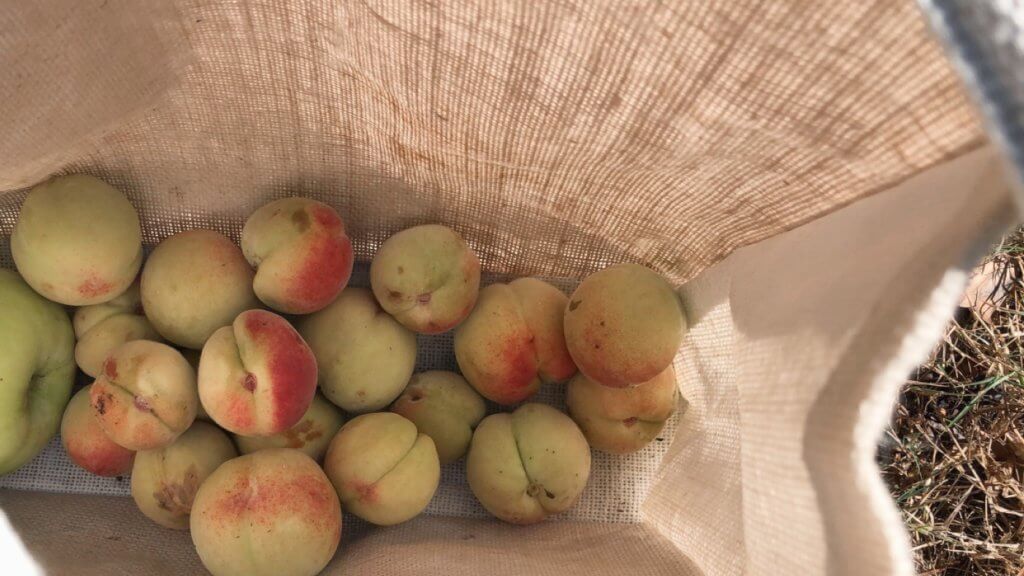Foraging for fruit in the red zone

Foraging is “the act of searching for food”, but these days it means searching for food that you can find for free on public land. It is a fantastic way to find healthy, delicious fruit without having to break out the wallet. It’s also an activity the whole family can do together, and it helps reduce food waste. With so many foraging opportunities in Christchurch’s red zone we asked Christchurch food blogger Ashleigh Burgess how to get started.
My top tips for foraging
When it comes to foraging, there are few useful tips which will help ensure as many people as possible get to enjoy the fruits on offer and avoid wasting food!
Before you start foraging, know what is edible. If you are unsure download Picture This! This app takes a photo of the plant and helps you work out what it is. Note this app doesn’t tell you what you can eat – it just tells you what the plant is so still act with caution if you’re not sure on what it is.
Many fruits fall off the tree when ripe e.g. plums and feijoas so pick through fruit that has fallen on the ground first and give it a wash – just because it’s on the ground, doesn’t mean it’s not edible.
When picking from the tree, the fruit should pull away easily as you touch it. There should be no yanking required. Don’t squeeze the fruit to see if it’s ripe, as you may bruise it. Pick just one and taste for ripeness if still unsure.
To avoid food waste just take what you need. A small reusable bag of peaches or plums is enough to have a go at bottling fruit or making a crumble.
Not all fruits are tasty for eating; some are only tasty for cooking and then eating. Quince is a great example as it is only edible when cooked. Try our quince paste recipe here. If you taste something and it’s not ‘tasty’ don’t instantly throw it away! Cook with it or dehydrate it.
So, what might you find while foraging?
Here are the most common things I find and a few facts about them

In some parts of the country you may be lucky enough to find stone fruits such as peaches, nectarines and plums. These are best ripened on the tree. Peach season is almost over by March for most of the country, but in Christchurch there will still be plenty of fruit ripe for the picking!
Figs, quinces and grapes can be ready late in March, depending on the variety and the summer you have had. None of these will ripen once off the tree. Quinces generally go super yellow when ready and fall to the ground.
Apples and pears – they’re all pretty much ready by early March. BUT before you go grabbing them off the tree, check the base first and collect anything on the ground that is edible. Some wild apple trees produce fruit that is not that great for eating or cooking with but may dehydrate or juice well.
Feijoas are the fruit to look out for from April to May. They fall to the ground when ripe. Check out Love Food Hate Waste’s 8 ways with feijoas for ideas for using up all those feijoas or my recipe for feijoa and white chocolate blondies.
https://lovefooddev.wpengine.com/8-ways-with-feijoas/
Citrus fruit such as lemons, oranges, mandarins and limes kick off from June through to September. These change colour off the tree, but they don’t ripen. A sour lemon, sure if you must. A sour orange, pass.
Berries – there are a few wild berries around from December (right through to March in some areas) in more rural areas and for kids these are so fun to find and even better to eat. Just keep in mind that your council may spray roadsides etc, and often berries cop a lot of the pesticides that are sprayed, especially blackberries.
Foraging rules!
Foraging can be a really fun and exciting thing for families to do and it’s also a way of people having access to fresh fruit that they may not be able to afford. But remember: Don’t trespass. This includes not trespassing on community gardens or picking fruit from houses whose gardens border on local reserves. If you see a tree with unpicked fruit on the ground just knock on the door and ask permission.
Finally, only take what you need, so there is plenty left for others.
Read Ashleigh’s full blog here
Read Julia’s tips on foraging for edible weeds here
